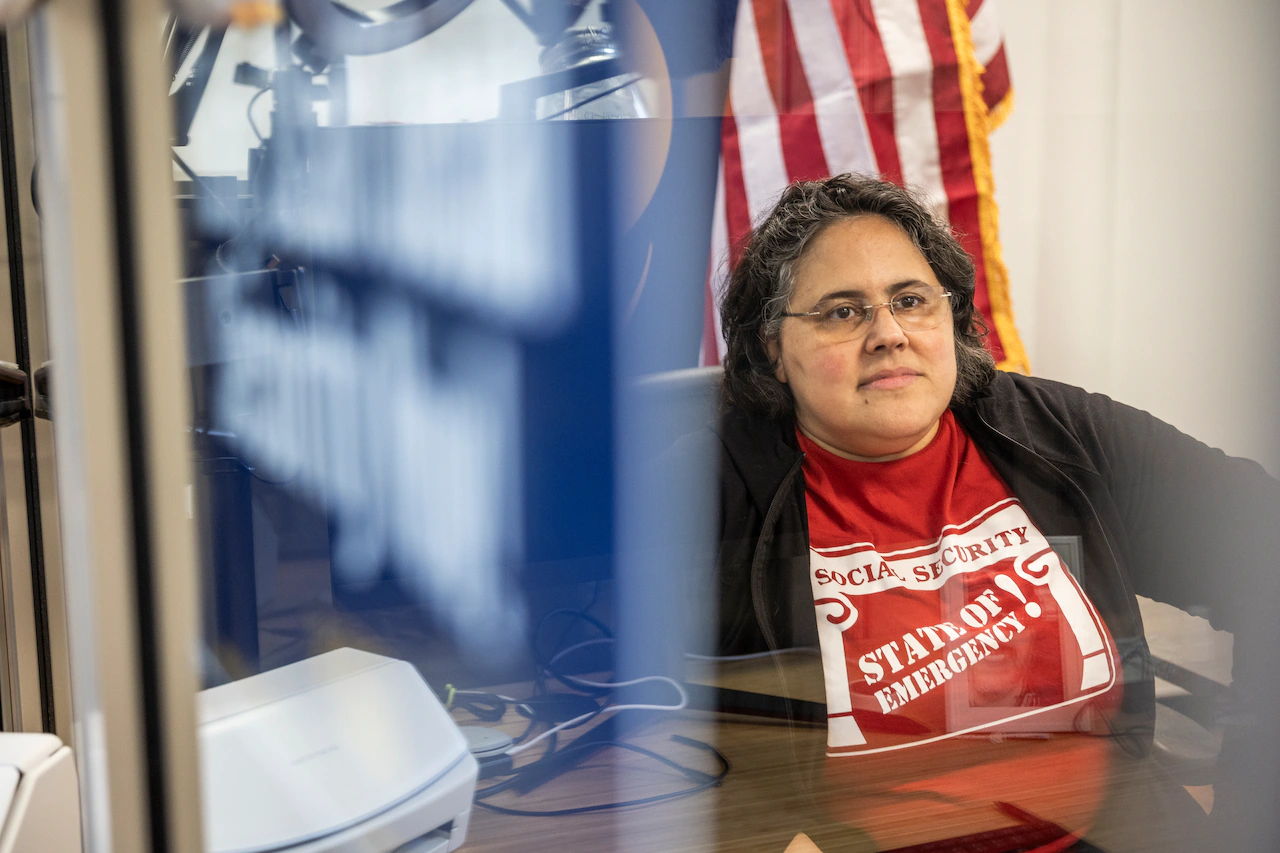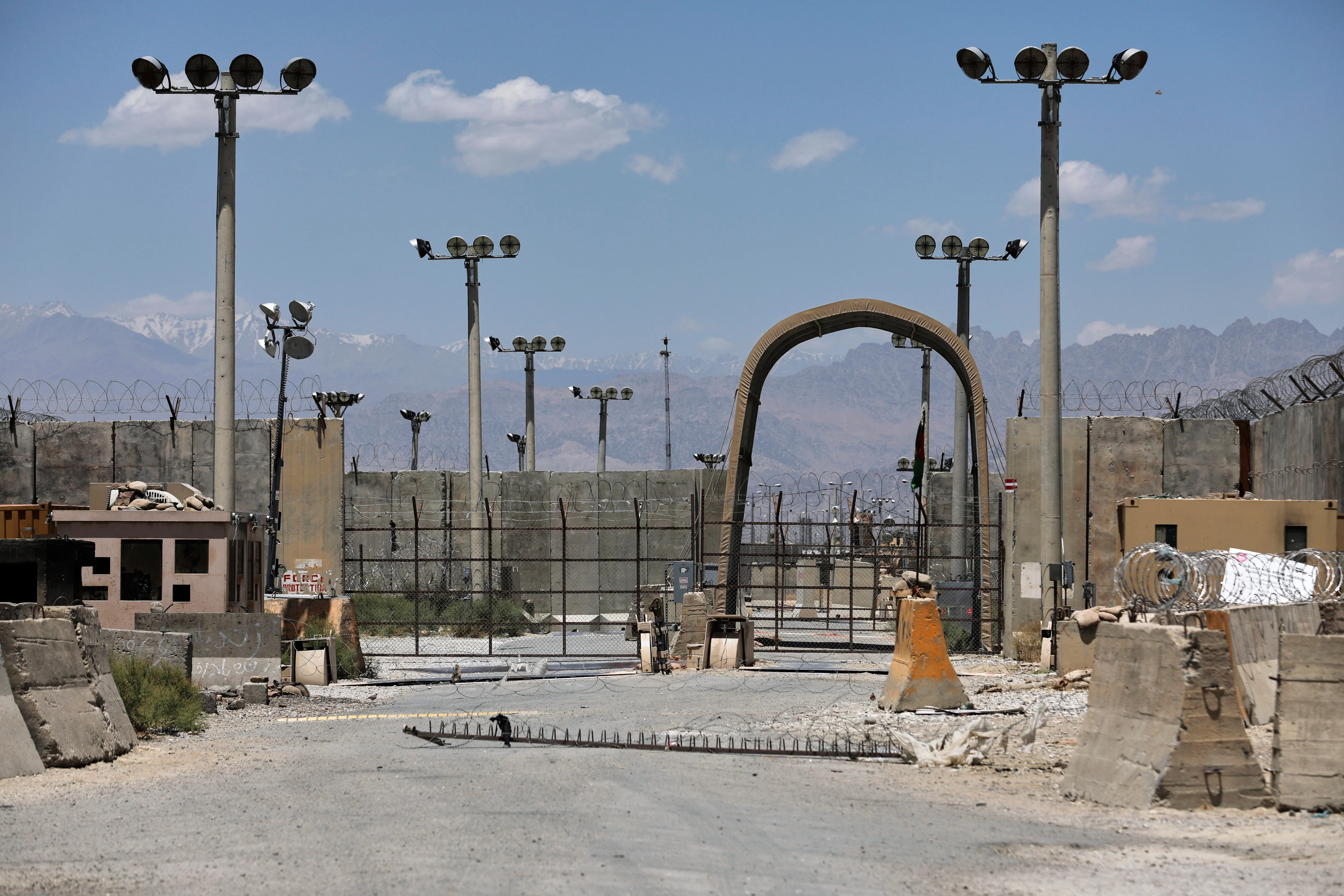‘It wasn’t ready, aim, fire – it was fire, fire, fire’: Gauging cuts to the federal workforce in Mass.

Last year, about 25,698 federal workers reported for duty in Massachusetts.
How many clock in today is anyone’s guess.
When asked how many federal employees work in Western Massachusetts, the Office of Personnel Management, the HR department for much of the federal government, said that information wasn’t available.
Lawmakers representing Massachusetts have been asking this question, too, with a letter sent to the OPM in March and then another asking about storm readiness to the U.S. Army Corps of Engineers last week.
Anecdotal accounts from unions representing federal workers in Massachusetts describe backlogs caused by staffing cuts, long wait times at the local Social Security office and immigration judges facing an overwhelming docket due to decimation in their ranks.
Meanwhile, others who follow the state of the federal workforce worry that the Trump administration is turning the clock back to a time when federal positions were filled through a spoils system, creating a workforce less attuned to the needs of the American people and more towards the whims of whoever occupies the White House.
President Donald Trump has worked to shutter whole agencies such as USAID, reclassify and fire workers and remove bargaining rights from federal employees.
Scott Kupor, director of the Office of Personnel Management, told The New York Times in August that 300,000 people are on track to depart the federal workforce by December, largely driven by voluntary departures of employees who decided to take the Department of Government Efficiency up on its incentives to leave.
This week, the General Services Administration sought to rehire some of the people separated through DOGE’s efforts. As Washington braces for a possible government shutdown in a couple days, the Trump administration is reportedly planning on firing employees en masse.
A system of civil service
The federal government is the nation’s largest employer, managing a workforce that makes up about 1.87% of the population of U.S. workers, or about 3 million people in January (including numbers from the independent U.S. Postal Service), according to Pew Research Center. It’s a number that has remained generally consistent since the 1960s.
About a third of federal workers are veterans, and they tend to stay at their jobs. While the average tenure in a wage and salary job is 3.9 years, the average federal worker spent about 11.8 years in their job, with their tenures crossing several presidential terms, according to Pew.
The Department of Veterans Affairs employs the biggest percentage of the federal workforce nationally. Locally, it operates a medical center in Leeds and maintains a cemetery in Cape Cod. The departments of Homeland Security, the Army, Navy, Air Force and the Department of Defense have the next largest shares of federal workers nationally, according to Pew.
In Massachusetts, some of the largest employers of federal workers include the Veterans Health Administration, the Internal Revenue Service and Social Security Administration, according to Bureau of Labor Statistics data released a few years ago.
Getting an up-to-date picture is a challenge, partially due to the Trump administration’s failure to provide information, said Max Stier, president and CEO of the Partnership for Public Service.
“The historical norm has been that there’s just been a significant lag on the information, but they eventually provided pretty good granular data,” Stier said. “Now we’re seeing not only lag, but just failure to provide information and also a lot less detail.”
The OPM last month canceled the annual survey sent to federal employees aimed at understanding their motivation and morale.
Partnership for Public Service has begun tracking the resignations and firings, a figure it places at more than 200,000 across the country, on its website.
Stier said the Trump administration’s effort to cut the federal workforce has been chaotic and unplanned.
When “they came in, it wasn’t ready, aim, fire — it was fire, fire, fire,” Stier said.
Who do they work for?
Stier’s concern extends beyond the headcount of employees. In places like the Department of Justice, the Trump administration has fired people who participated in prosecutions against the president. In other instances, Stier said, the firings targeted longtime employees who were more likely to give voice to information unwelcome to the administration.
“I think the fundamental change that this administration has pursued is removing the idea that the workforce is there for the public’s good,” he said. “And instead substituting the idea from the 19th century that to the victors go the spoils, so that the workforce is there as loyalists.”
The cuts have left the intelligence community with substantially fewer staff members to handle national security or terrorism threats, Stier said. And Americans expect to have a smooth experience when they seek health care at the Department of Veterans Affairs or benefits at the Social Security Administration, for instance.
“There’s no corner of our country that is immune from the harms that have been caused,” Stier said.
While each president has tried to leave a mark on the civil service system, Peter Fairman, an associate political science professor at Western New England University, said Trump stands out with his administration’s aggressiveness, open firings and “the open disdain for government employees.”
“The administration is also trying to put in a system where there’s much more emphasis on loyalty to his priorities,” Fairman said.
Efforts to change the federal workforce have resulted in a flurry of lawsuits. The Trump administration has been most successful by using incentive programs to encourage workers to retire early or resign, Fairman said. He said the administration’s drive to pare down the federal workforce comes as Americans hold “profound distrust” towards the federal government.
During the Biden administration, Americans’ trust in their federal government “to do what is right” hovered around 20%, according to the Pew Research Center. It’s a contrast from Americans’ views during the Eisenhower and Kennedy administrations, when more than 70% expressed faith in the federal government.
At the same time, Americans who were asked to rate their personal experiences with the federal government ranked the experiences highly, Fairman.
Unions see disruptions on the ground
Matthew Biggs, president of the union that represents immigration judges around the country, said the immigration court in Chelmsford was set up outside of Boston to handle the backlog of immigration cases in the area. Over the last few months, the Trump administration fired most of the judges there. Now, only five judges work where 18 sat months ago.
The firing of a judge creates a massive strain on the system, as the typical immigration judge carries a workload of 500-700 cases.
“You just gutted that immigration court … [with] this huge case backlog,” Biggs said.
Nationally, about two thirds of immigration judges who left the job were fired. Those who turn to the Merit Systems Protection board to contest their terminations seek help from an agency that “is still there on paper,” but which has been “gutted” by firings itself, Biggs said.
Camillie Piñeiro, president of Local 1164 of the American Federation of Government Employees, said about seven people have departed the Social Security office in Springfield since January, leaving about 39 employees to staff an office that fields hundreds of appointments a day.
“The fewer of us there are, the fewer appointments we can take,” Piñeiro said.
Now, if a person calls, they face a wait of about an hour and a half to speak with a person, Piñeiro said.
Asked about its staffing levels in the state, the Social Security Administration issued a statement: “Commissioner (Frank) Bisignano has pledged to have the right level of staffing to deliver best-in-class customer service.”
Across the state, the union represents 546 employees, Piñeiro said. Cuts in the workforce have left some Social Security offices without managers, or in some cases, only one manager remains.
Due to changes, people can no longer call to, say, change their direct deposit account in order to receive benefits. In order to come in person, they have to schedule an appointment weeks out, Piñeiro said.
A fraught future
The drawdown in the workforce is not necessarily over. While the Trump administration offered employees a fork in the road, it also offered two other programs to incentivize voluntary separation and retirement. “We have not necessarily seen those reductions,” Piñeiro said.
In March, Gov. Maura Healey rolled out a dashboard aimed at attracting federal workers to jobs in the state. Since then, the site has logged about 32,600 pageviews, according to the Executive Office of Labor and Workforce Development.
Meanwhile, former federal employees have been coming into MassHire’s Springfield Career Center in “dribs and drabs,” said Kevin Lynn, the center’s executive director, a reflection of spotty nature of the cuts.
In some cases, Lynn said, the job skills federal employees attained are “not really translating into the competitive job market.” That’s because workers may lack necessary degrees or don’t have enough experience with a particular piece of technology, for instance.
As a result, a job-seeker may have to accept a pay cut of tens of thousands of dollars. “That’s a hard thing for people to accept,” Lynn said.
What the agencies have said
A spokesperson at the Department of Veterans Affairs said the agency would not be able to provide numbers this past week. The department said in a July press release that by Sept. 30 about 29,000 employees would leave its ranks across the nation, “eliminating the need for a large-scale reduction-in-force.”
The Fish and Wildlife Service, which has a 72,000- square-foot facility in Hadley, said it wasn’t its policy to discuss staffing. The center, which was included on a list of leases eyed for cancellation by DOGE, is open and its lease is not terminated, Fish and Wildlife spokesperson Garrett Peterson said.
The Environmental Protection Agency said it had 640 employees working across all of New England in January. Now, it said in a statement it is confident it can carry out its mission with its current 487 employees.
At the U.S. Postal Service, some unionized workers worry the independent agency will be privatized. In an August op-ed published in Newsweek, Mark Dimondstein, president of the American Postal Workers Union, said the service is facing an existential threat in the Trump administration, as it has mused about privatizing the agency. Trump, Dimondstein pointed out, appointed David Steiner as a postmaster general; his background includes work at FedEx.
About 500 civilians work at Westover Air Reserve Base in Chicopee, supporting the 439th Airlift Wing as it flies C-5 Galaxy aircraft, said Tim Jensen, spokesperson for the wing. Since January, about 40 civilians have left, moves that come about because of transfers, retirements and separations. The wing is looking to fill vacancies at the base, Jensen said.
The inspector general overseeing the Internal Revenue Service issued a report in July saying 552 IRS employees in Massachusetts, or between 24%-30% of its workforce, were separated from the service. Nationally, the report said, 25,680 IRS employees have left for a variety of reasons, leaving a countrywide workforce of 77,428, including probationary workers who returned.
Col. Justin Pabis, who commands the New England District of the U.S. Army Corps of Engineers, acknowledged it faced a reduction in staff. Last year, the Corps employed about 500 civilians across the region. However, Pabis said in a statement that the Corps’ priority remains the operation of its flood management projects and maintenance of the Cape Cod Canal and it ensures it has staff to meet those goals. “We are project-funded, and our personnel are based on the funding available to these projects,” Pabis’s statement says. “When we experience a loss of employees similar to what we have endured with the Deferred Resignation Program and ongoing hiring freeze, we assess what we can do and what we cannot do and communicate the associated risks to our senior leaders.”



